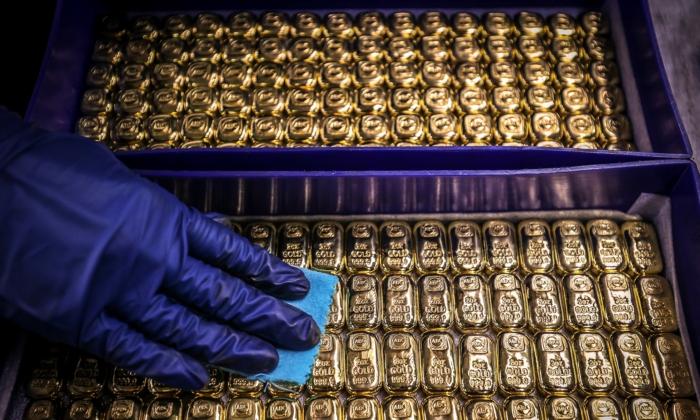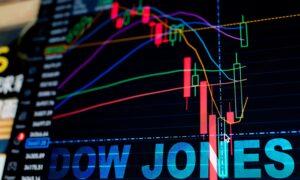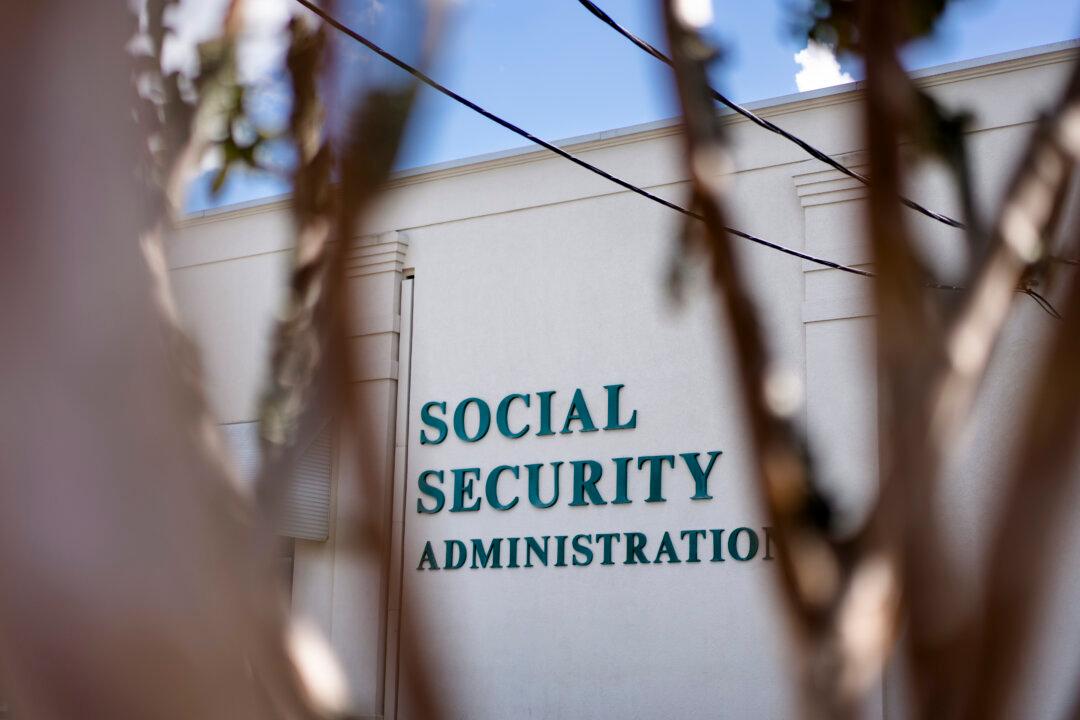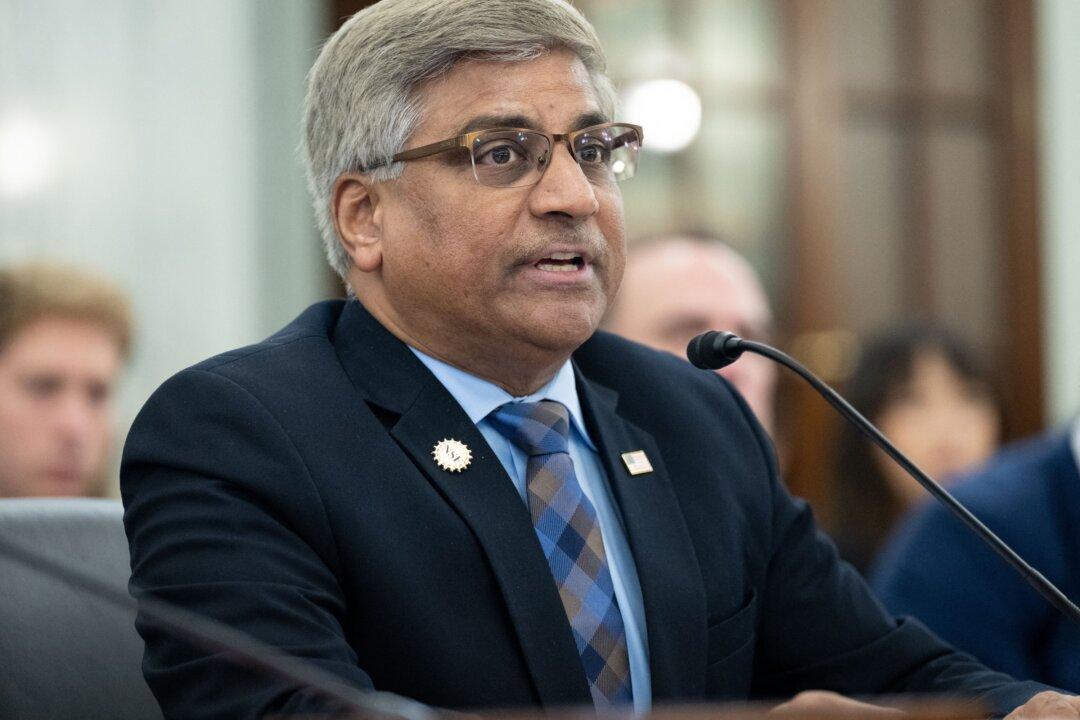Gold prices have continuously risen over the past few days to hit record-high levels as traders increasingly expect the U.S. Federal Reserve to begin lowering interest rates.
On March 6, spot gold was trading at about $2,142 per ounce as of 9:35 a.m. EST, up by 7.96 percent from a low hit on Feb. 14. This is higher than the historical high of $2,141.59 hit on March 5. Prices had gone up every single day for five days. The surge in prices is happening as many investors believe that the Fed may soon start cutting interest rates. Gold and interest rates are thought to have a negative correlation—that is, declining interest rates make assets such as gold attractive to investors.
“The big reason here is that we’re seeing the market increasingly believing that a Fed rate cut is nearer rather than further away,” Bart Melek, head of commodity strategies at TD Securities, told Reuters. “Markets have to be a little bit more convinced for gold to move higher, but ultimately in the second quarter, we do think it can go to over $2,300-plus.”
Nitesh Shah, commodity strategist at WisdomTree, pointed to geopolitical risks arising from the Red Sea and multiple elections scheduled across the world this year as driving “continued strength in retail demand for gold.”
“We wouldn’t be surprised if gold gives back some of these gains as the U.S. Federal Reserve talks down imminent cuts, but once rate cuts look certain, we expect gold to trade significantly higher,” he said.
“The committee does not expect it will be appropriate to reduce the target range until it has gained greater confidence that inflation is moving sustainably toward 2 percent,” the FOMC said in a statement. January inflation came in at 3.1 percent, way above the 2 percent target.
Since March 2022, the Fed has raised interest rates 11 times. As a result, the rate is currently at a two-decade high of 5.25 percent. The upcoming Fed meeting is scheduled for March 19–20.
During his remarks to the House Financial Services Committee on March 6, Mr. Powell said the central bank is expecting rate cuts later this year.
As of March 6, only 3 percent of interest rate traders were expecting rates to be cut by 25 basis points from the current range of 5.25 percent to 5.50 percent in the March meeting, according to the CME FedWatch tool.
Gold Buying, Demand, and Prices
In addition to Fed rates and geopolitical tensions, gold prices are also driven by other factors. For instance, fluctuations in the U.S. dollar can have an impact on gold.Similarly, central bank gold buying is also a major determinant of prices. According to the World Gold Council (WGC), global central banks bought 1,037 tons of gold in 2023, the second consecutive time that gold buying exceeded 1,000 tons.
The WGC expects the trend to continue this year, stating: “The buying trend that has been in place since 2010 shows little sign of abating, even if a third consecutive year of approximately 1,000 tons net purchases may be unlikely. This reinforces our belief that global central banks will remain net buyers again this year.”
Kar Yong Ang, a financial market analyst at the online currency trading brokerage Octa, believes central bank gold buying will act as the “main driver” of gold prices this year, according to media outlet The Asset.
“If the trend continues and the level of gold reserves moves toward an average of 40 percent of the gold composition in reserves, that would mean an additional US$3.2 trillion in the asset—a 25 percent rise in 2025, which would correspond to a price of US$2,500 an ounce,” he said.
Inflationary pressures will also be a key factor in gold prices, according to Mr. Ang.
“Traditionally, the gold price has been negatively correlated with the inflation rate. The lower the inflation rate, the lower the interest rates on government bonds. As a result, the relative attractiveness of non-interest-bearing assets such as gold increases,” he told The Asset.
In a report last month, Goldman Sachs predicted that gold prices will rise by 6 percent, to $2,175 an ounce, over the next 12 months. While money has flowed out of gold exchange-traded funds (ETFs), these outflows have been offset by gold buying from central banks, it stated.
Ole Hansen, head of commodity strategy at Saxo investment bank, also made similar observations in a March 4 report.
“So-called ‘paper’ gold investors in ETFs and futures have so far this year been net sellers of gold, in ETFs by around 100 tons while speculators in the futures market have halved their net long after selling around 190 tons,” he wrote.
Mr. Hansen said he expects “a continued strong underlying physical demand from central banks and retail buyers in Asia” as well as geopolitical tensions to reduce the appetite for short-selling, thus strengthening the yellow metal.







